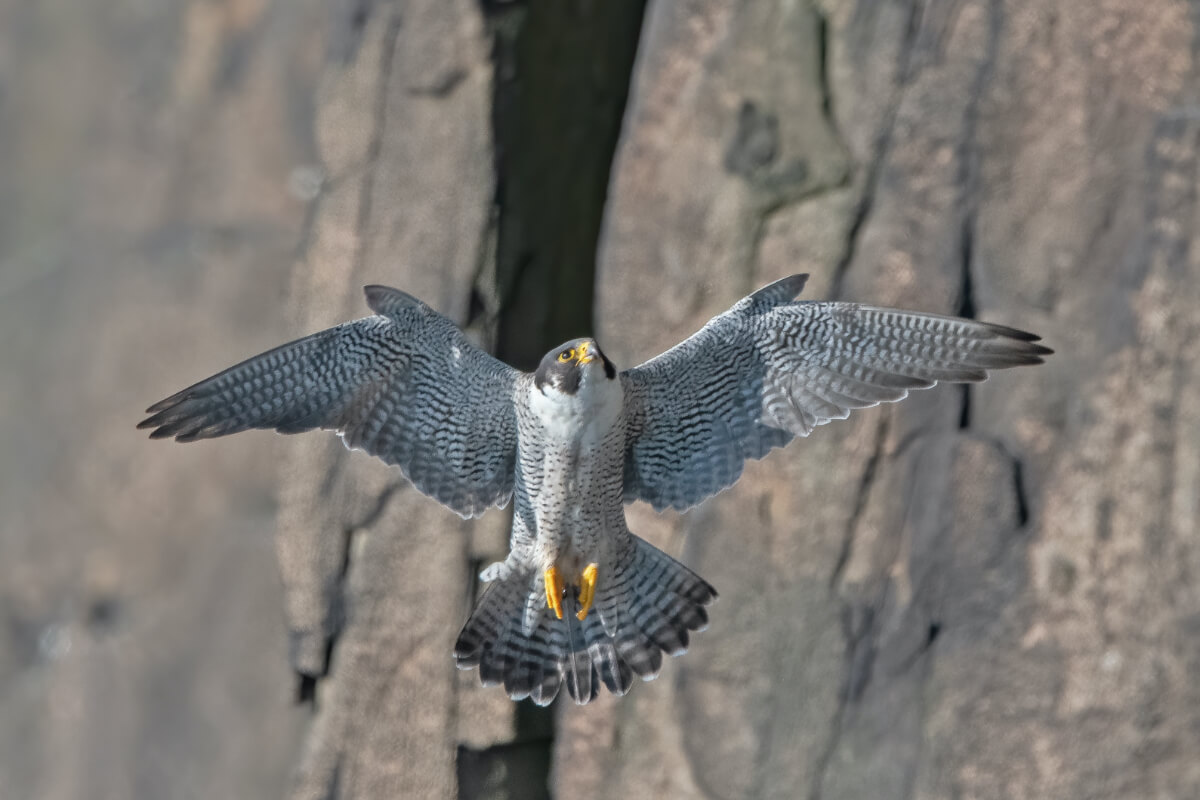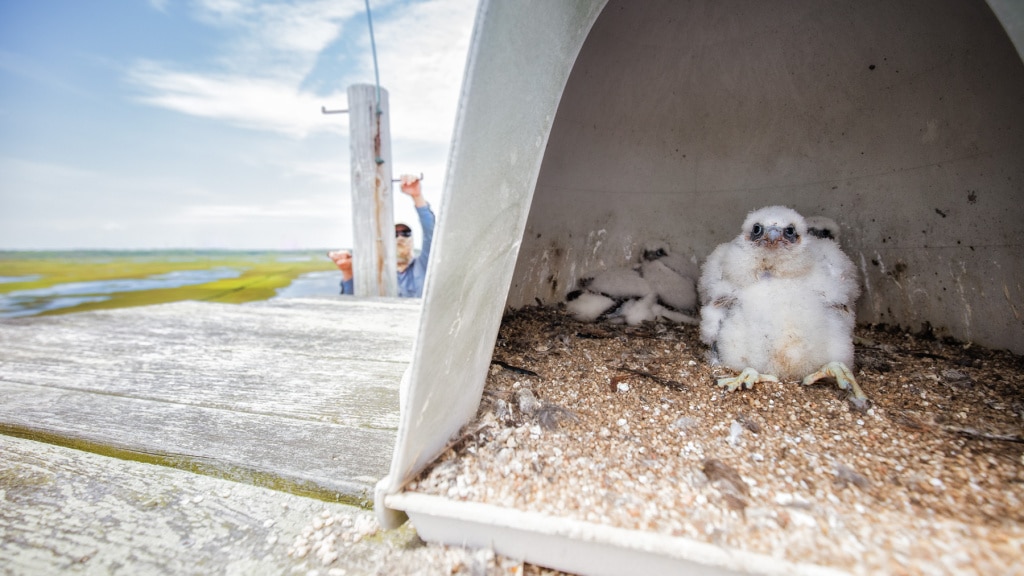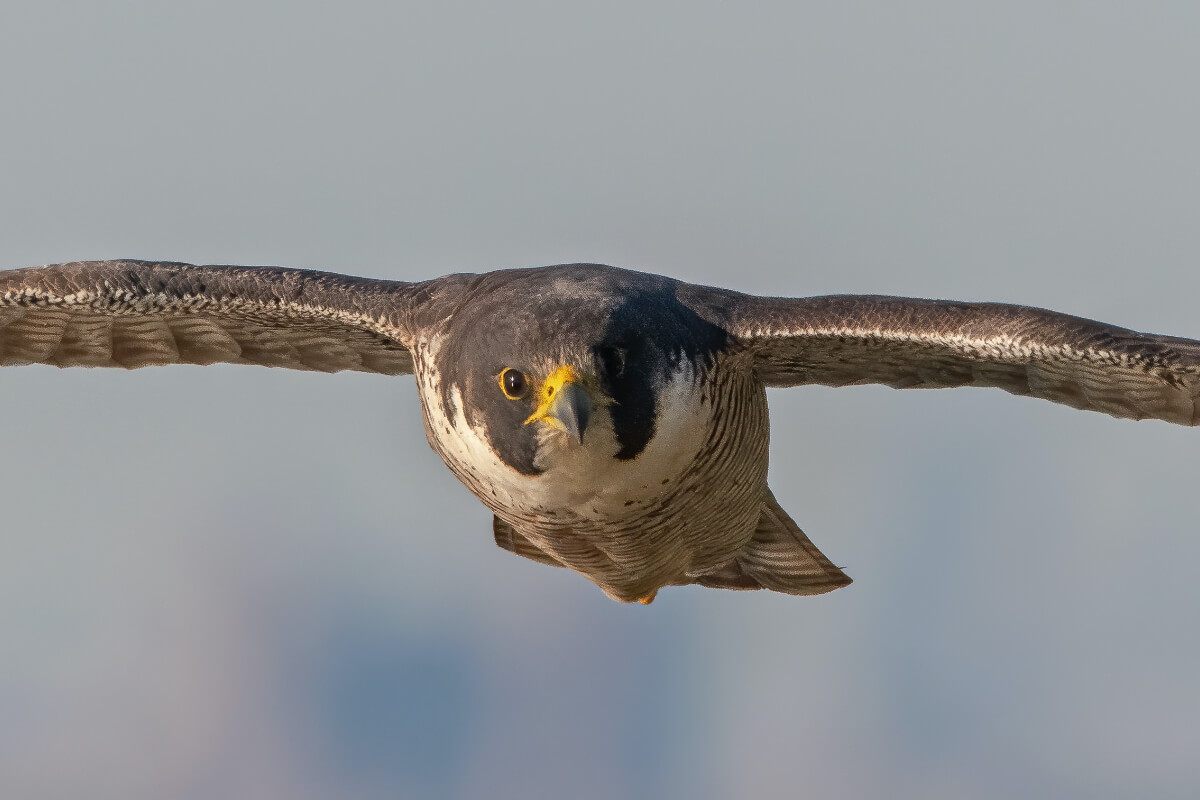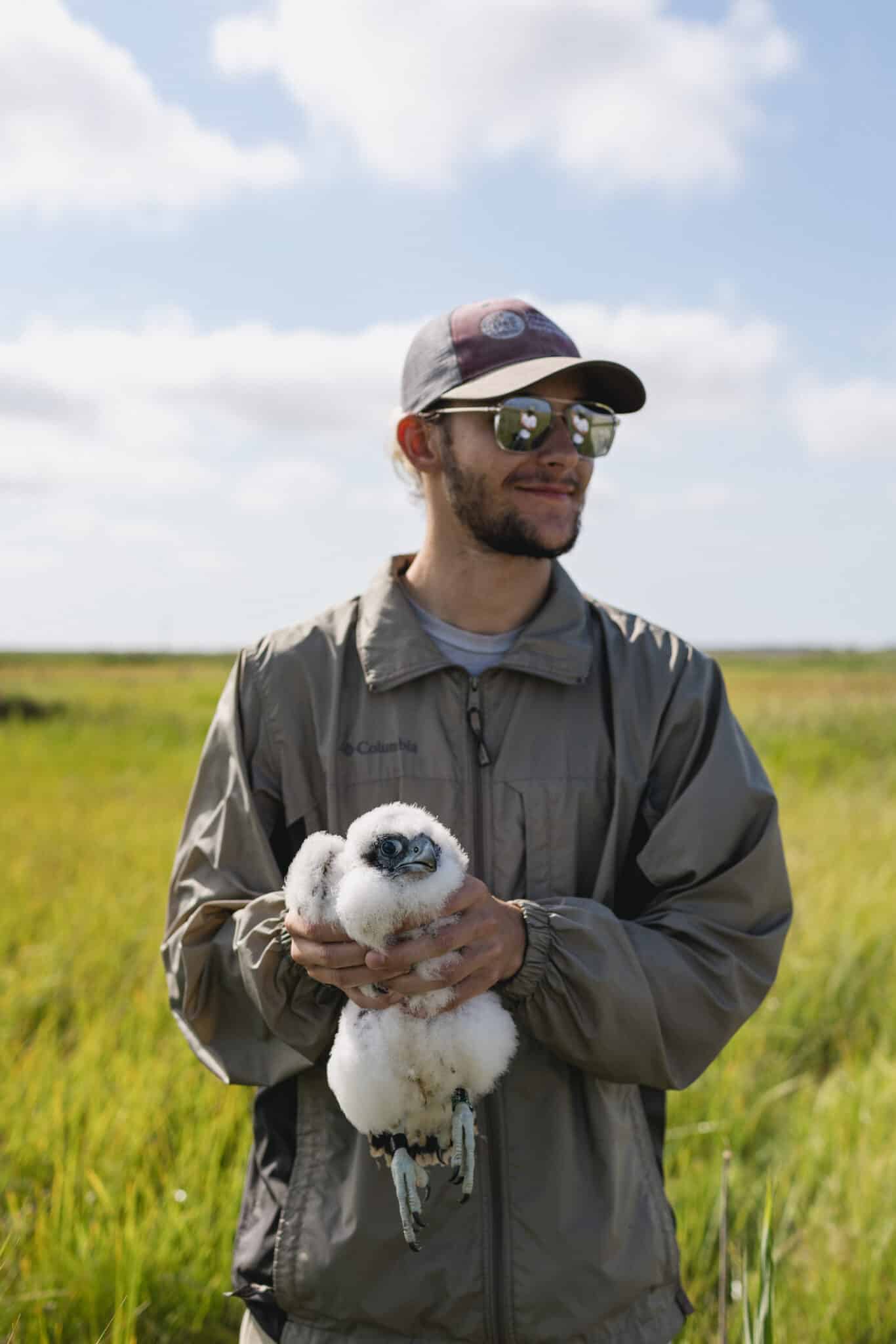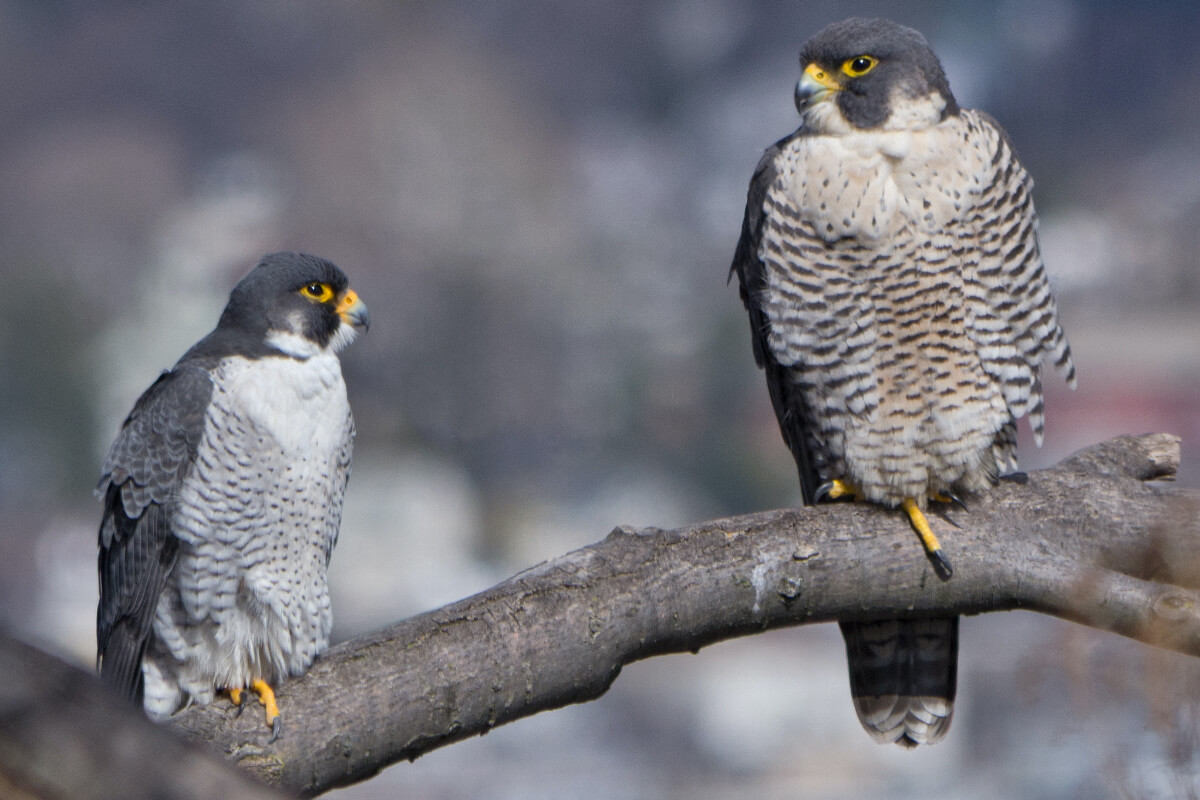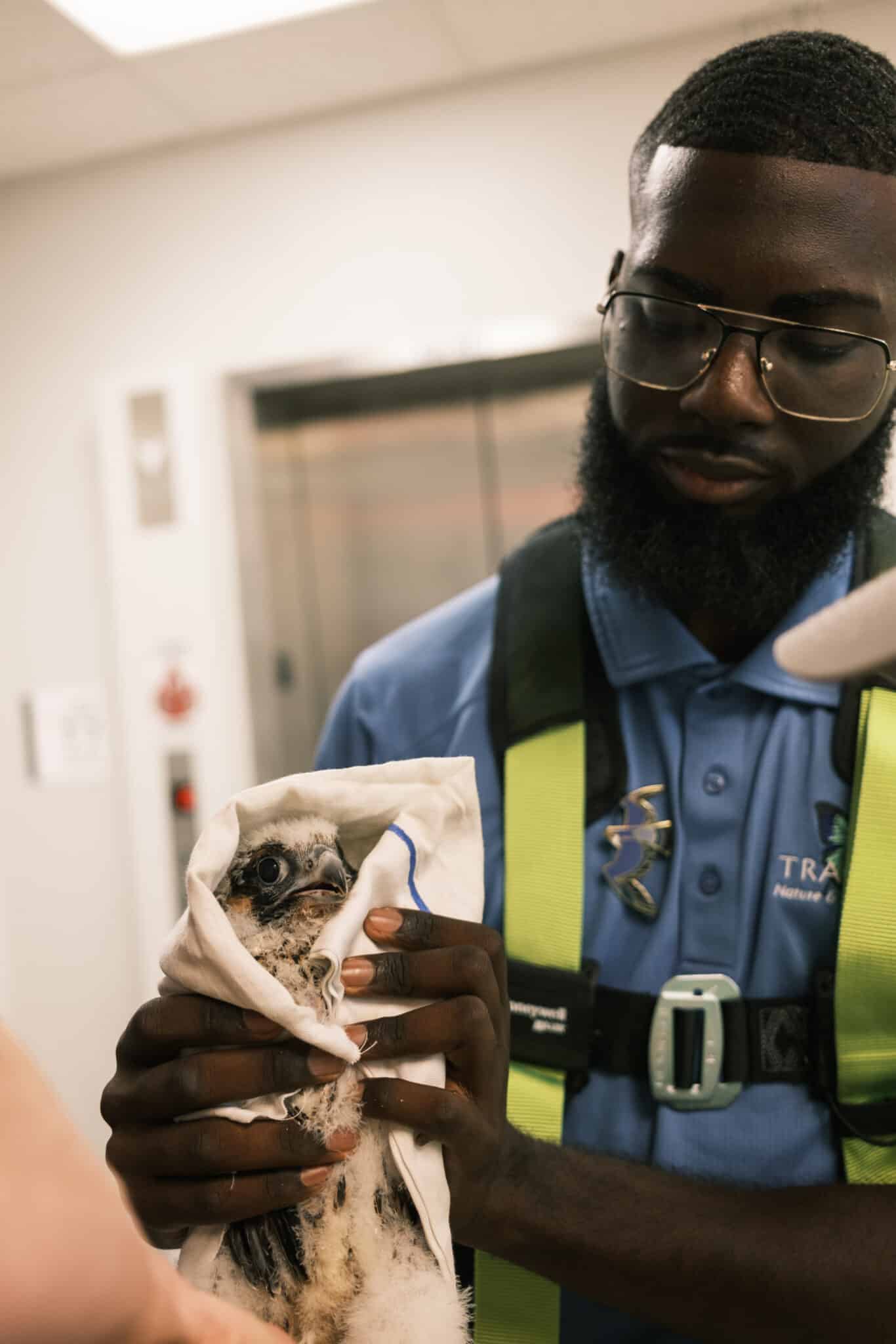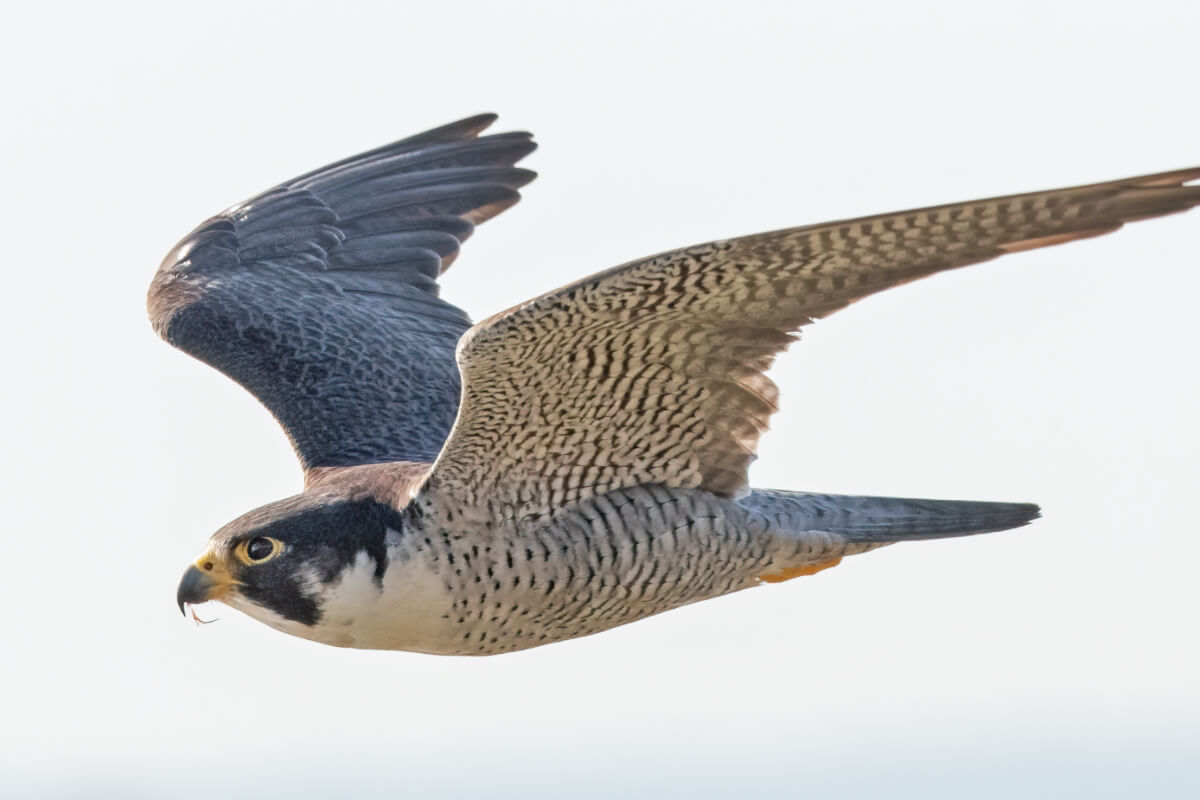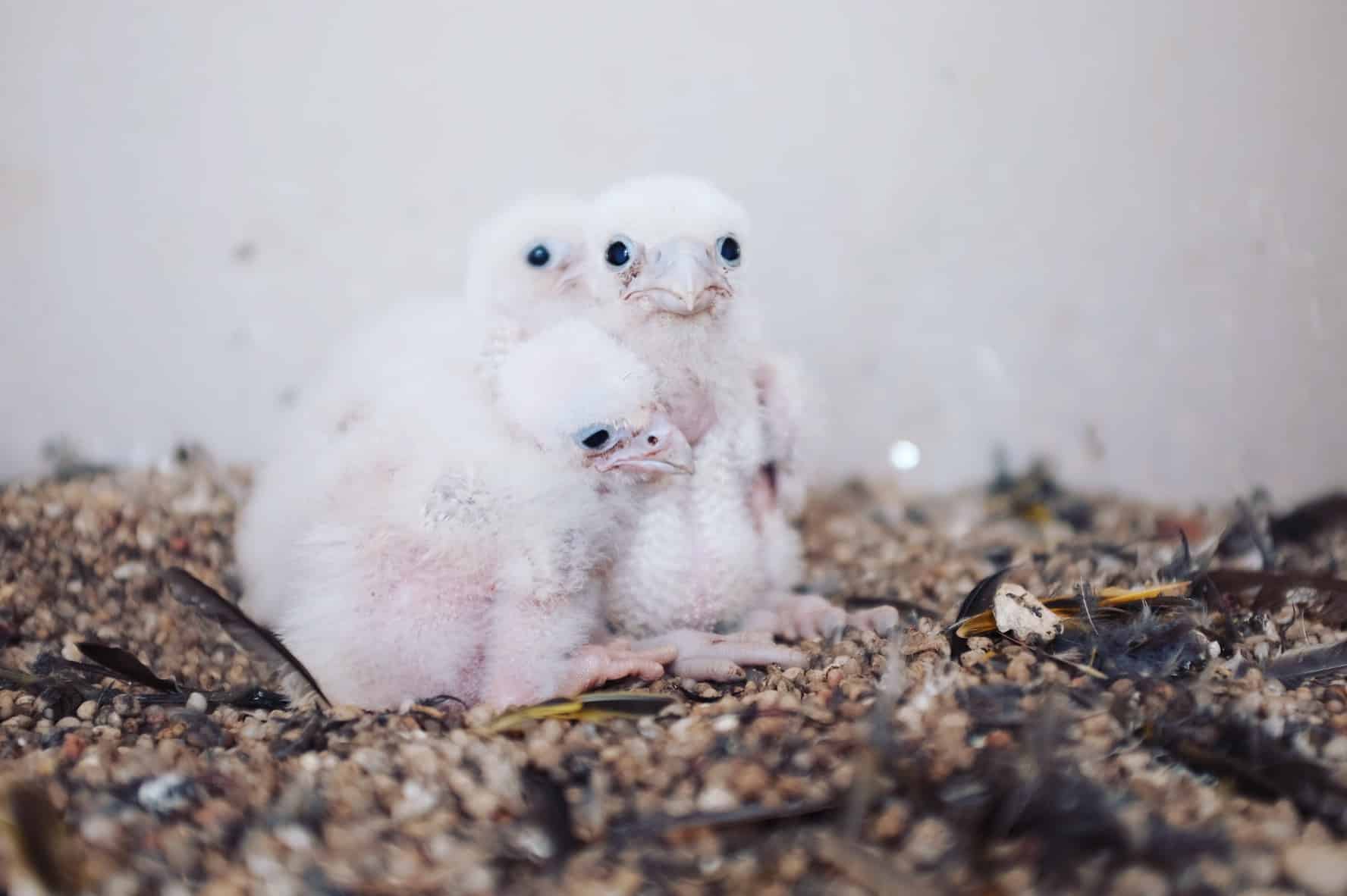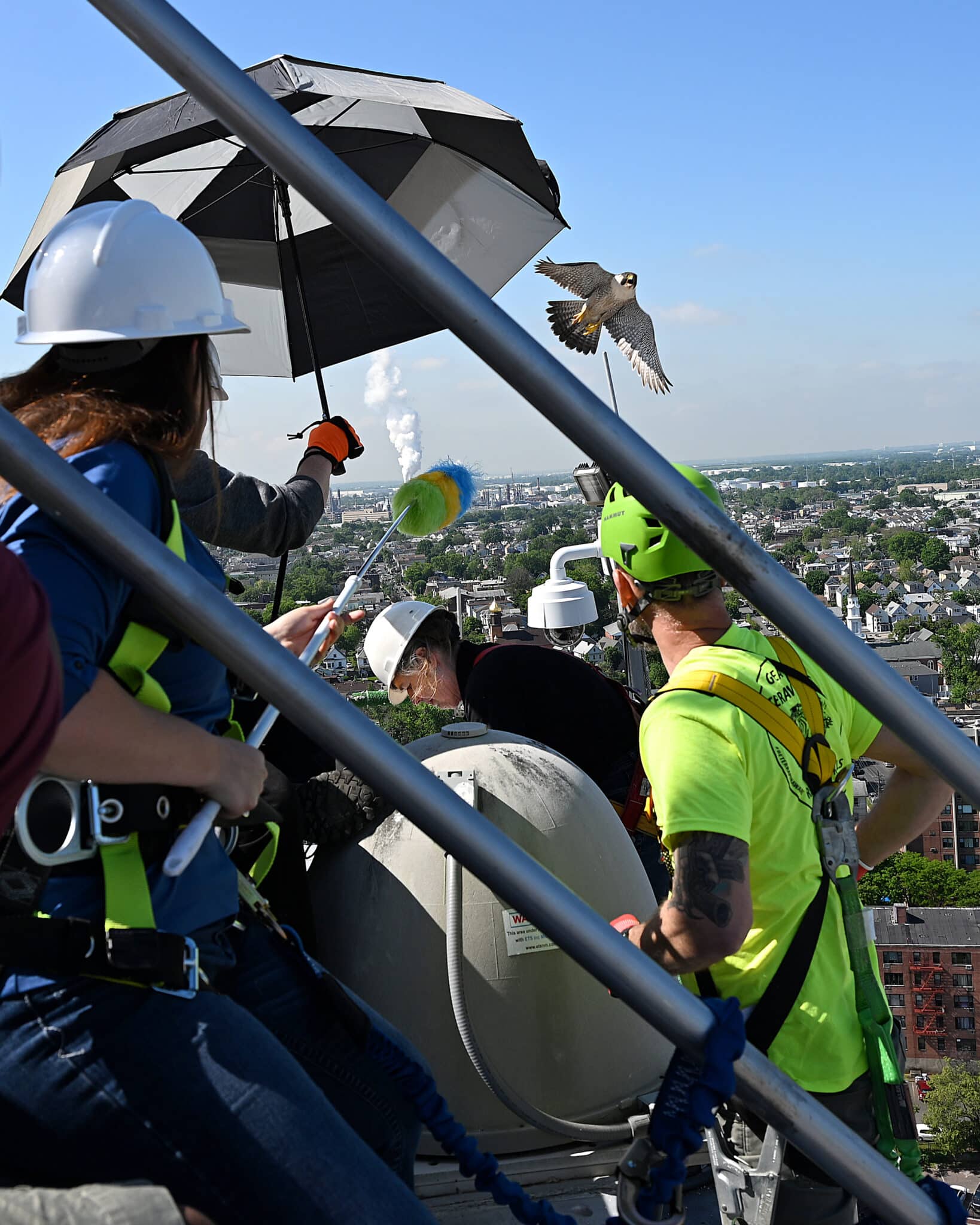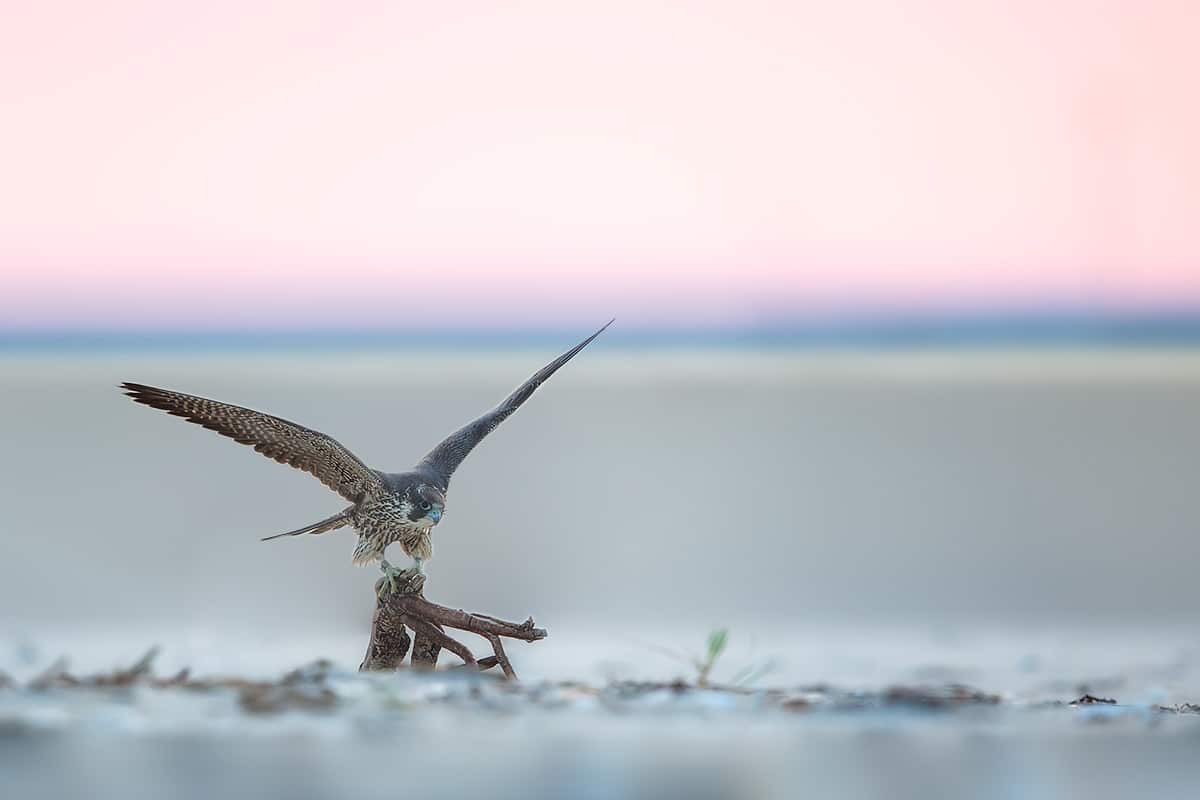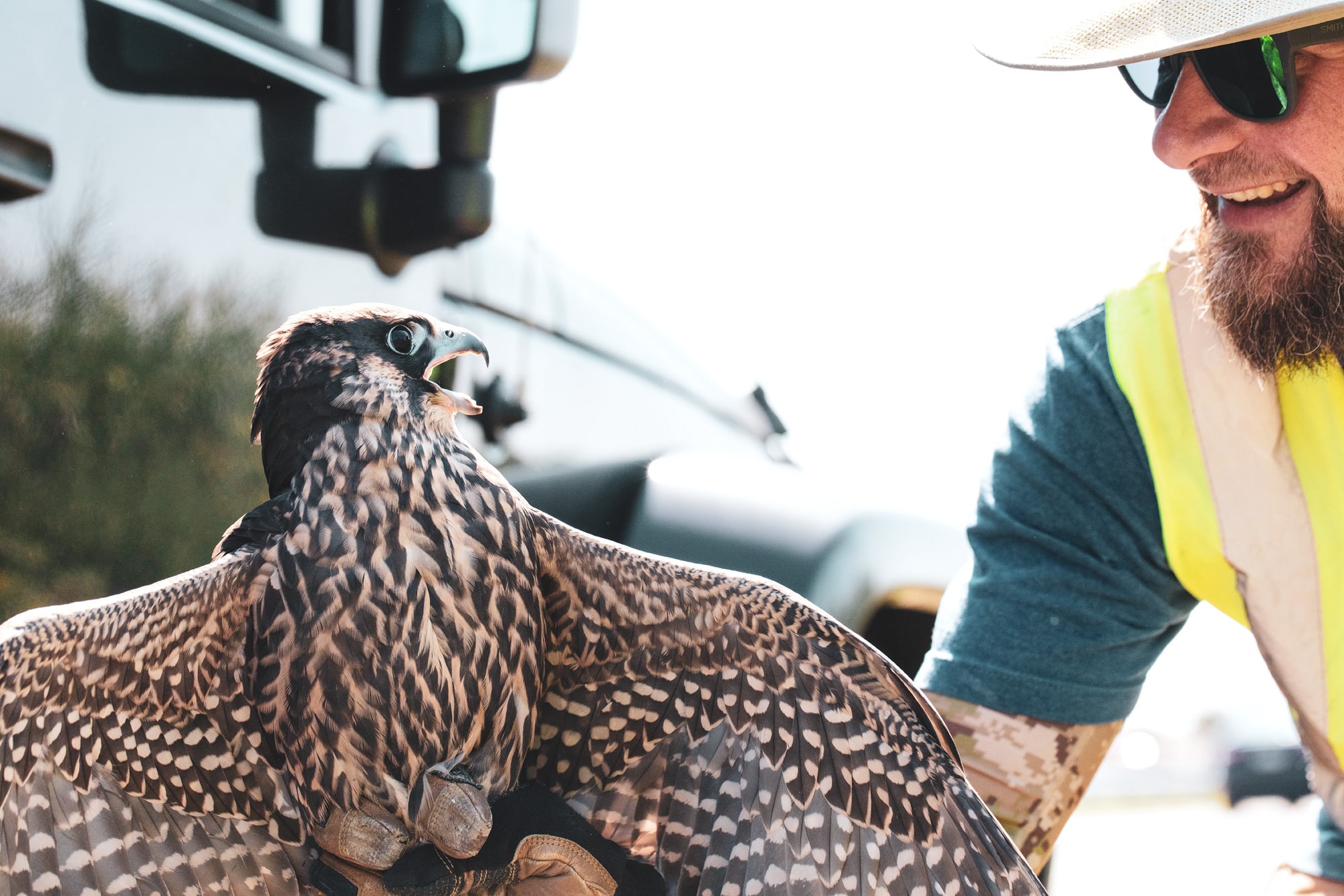Peregrine Falcon Project
We're committed to ensuring that the falcon population continues to thrive in New Jersey.
Why It Matters
We work closely with biologists with NJDEP Fish & Wildlife / Endangered and Nongame Species Program (ENSP) to help monitor the population.
Peregrine falcons (Falco peregrinus) have made a remarkable recovery in New Jersey, thanks to tremendous efforts by New Jersey Fish & Wildlife’s Endangered and Nongame Species Program (ENSP), The Peregrine Fund, and other partners. They were once extirpated from the state from the harmful effects of DDT and being persecuted. After a widespread effort to restore breeding populations throughout the eastern United States, wild nesting occurred again in 1980.
Today there are now around forty pairs who nest throughout the state, from the rugged cliffs of the Palisades and skyscrapers of Jersey City and Atlantic City, to the Walt Whitman Bridge and along our coast.
Conservation Efforts
Our goal is to support monitoring efforts by ENSP to ensure that falcons are not at risk to become endangered again. Each winter we conduct maintenance to nesting towers, which were used to help re-establish falcons in New Jersey. As many of these old towers reach their life span, we have partnered with ENSP to ensure they remain in good working order until other suitable nest sites are available.
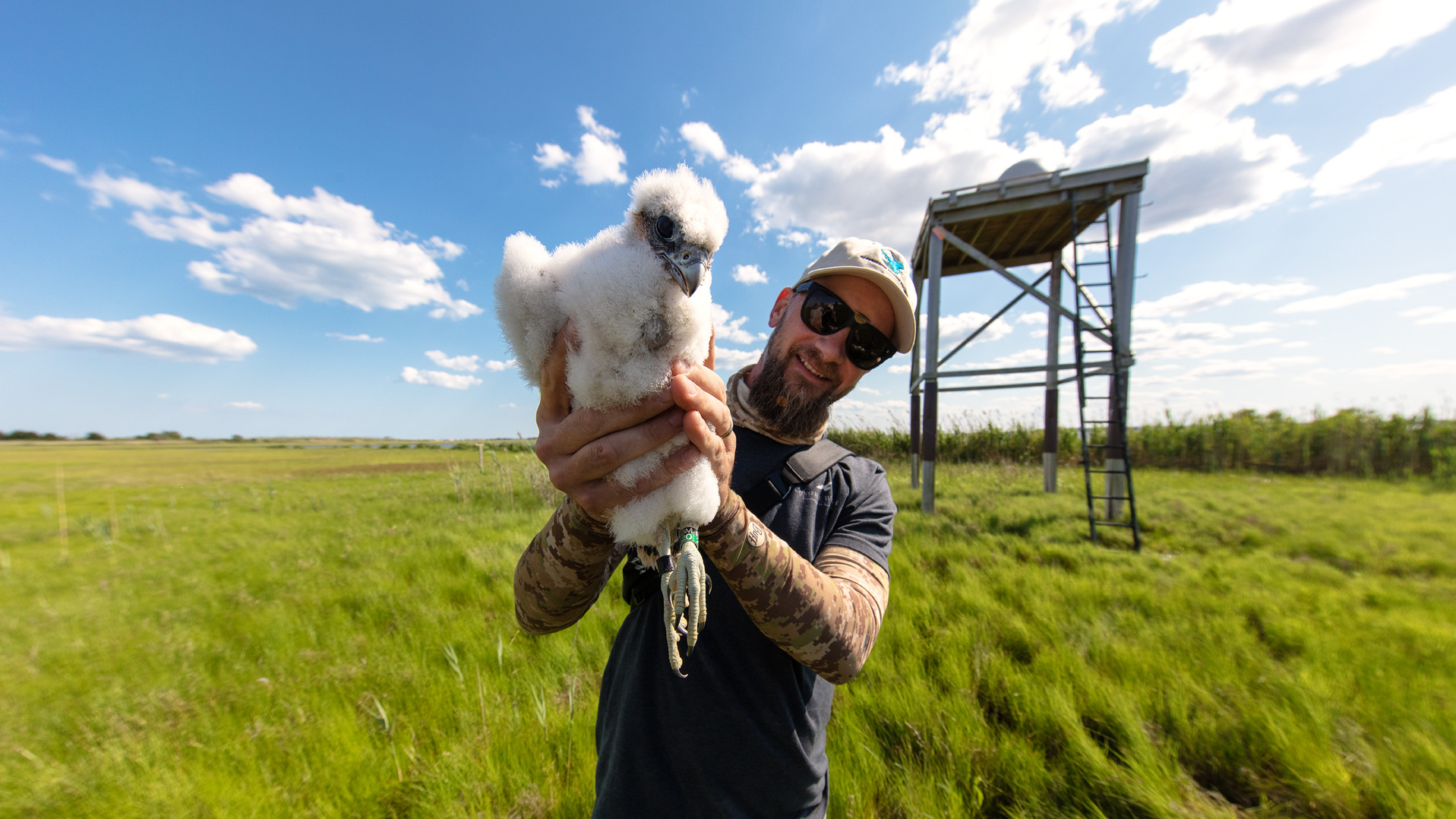
During their nesting season, which usually begins in late March and early April, we monitor nest sites for activity. During site visits, we attempt to identify the breeding adults by their bi-color, field readable leg bands. We record the number of eggs laid to estimate their hatch date. Collecting this valuable data can determine nest outcome, age of adults, site fidelity, and the turnover rate in the population. We can also look back at the genealogy of individual birds using NestStory, which can tell a very interesting story of a banded bird. Active nests are monitored routinely until the young are old enough to band (approximately 3-4 weeks old) for future tracking.
A limiting factor in monitoring falcons throughout the state has been their elusiveness and the lack of staff or personal to identify new nests. Most new nests are found during construction projects on bridges or buildings, where they nest on beams, in crevices, or ledges with some debris. Some falcons have even nested on osprey nest platforms in the coastal region or flower pots on balconies. If you see a pair of falcons who occupy a territory (aka hang out year-round) then they might be attempting to nest there. Please report your sighting to help us keep track of the population and most importantly so that the nest is protected from human disturbance.
For 20 years, at a nest site in Hudson County, we streamed the Jersey City Falcon Cam, which was on the top of a building at 101 Hudson St. The webcam allowed viewers to follow the nesting season from courtship to fledging (March to July). CWF biologists and naturalists wrote entries in Nestbox News, an online journal that summarizes events and milestones during the nesting season. A second webcam, on the tallest building in Elizabeth, is where the Union County Falcon Cam is located and streamed in partnership with Union County and Phillips 66.
Where to View Peregrines in the Wild
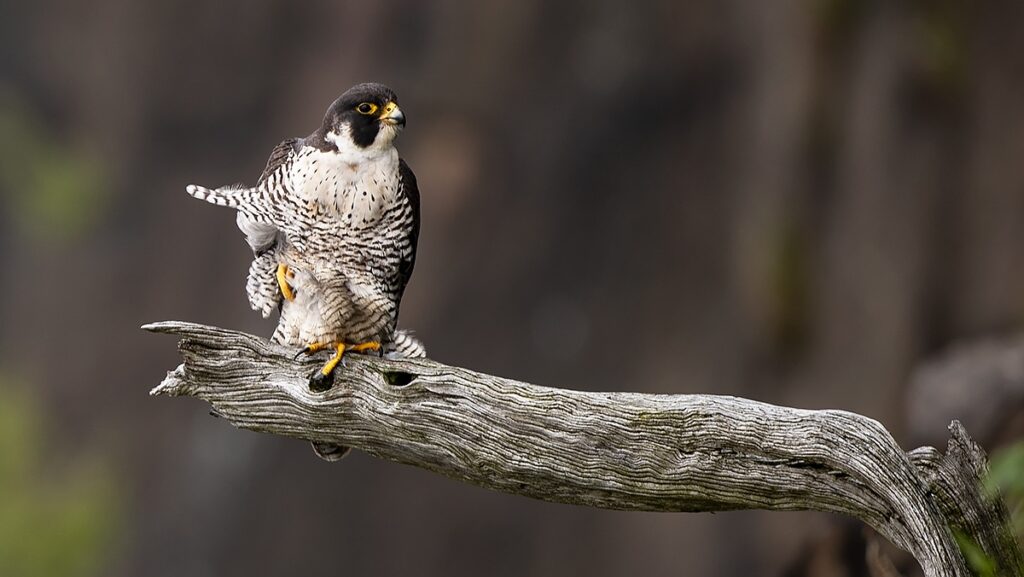
For those who seek to view or photograph New Jersey’s fastest predator, there are several locations where they can be viewed at a distance, without disturbing them.
Spring and Summer
During summer months you can find them in urban areas near nest sites at the Union County courthouse in Elizabeth, or at the old Atlantic Club in Atlantic City. You might also be able to catch some interactions between fledglings and adults along the cliffs of the Palisades at State Line Lookout, Alpine, NJ. In spring you might catch a glimpse of migrants foraging on shorebirds during peak migration along the Delaware Bayshore.
Fall and Winter
In the fall head down to Cape May Point State Park to see them during migration at the Hawk Watch. Their migration peaks in early October.
During the winter months visit Edwin B. Forsythe NWR Wildlife Drive or the Holgate Unit to see wintering birds. On some barrier islands, they are known to perch on water towers or near bridges. Sometimes all you need to do is look up and you might see a peregrine falcon.
Contact Us
Ben Wurst / Senior Wildlife Biologist: Email
